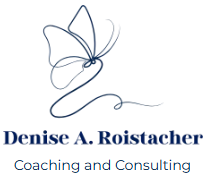The Succession Planning Gamble
Succession Planning Gamble: Ready to Roll the Dice?
Succession planning. For those unfamiliar, it's the behind-closed-doors conversation that determines who’s next in line when a leader suddenly exits—voluntarily or not. These discussions often open with a dramatic prompt like, “If Leader X gets hit by a bus,” or “If Leader Y wins the lottery, who steps in?”
More recently, companies have tried to formalize the process with talent grids, calibration sessions, and leadership development programs. Yet despite the structure and good intentions, succession planning often remains more of a gamble than a guarantee.
Here’s the reality:
- Names are placed on lists, but actual development plans are vague or non-existent.
- Candidates may be “anointed” without fully assessing their true readiness—or even their interest in the role.
- Organizational needs shift, but succession plans are rarely updated to reflect the new realities.
- Political dynamics and personal biases can quietly skew the process.
When a sudden vacancy occurs, organizations often scramble, realizing too late that the so-called successor is either unprepared or uninterested. At its worst, the succession plan becomes an illusion of readiness—giving leaders a misplaced sense of security rather than building true leadership strength.
If succession planning is treated like a checklist item rather than an active, evolving process, it can create more risk, not less.
The Illusion of Readiness
At its best, succession planning ensures continuity, minimizes disruption, and helps organizations stay steady during change. But here’s the reality:
🔹 According to a 2023
Gartner report, only
27% of HR leaders say their organization has a strong bench of ready-now successors.
🔹 Meanwhile,
74% of organizations report they are unprepared to fill leadership gaps when they arise, according to
Deloitte’s Global Human Capital Trends.
Despite the planning, when the moment comes—someone is promoted, leaves, or suddenly exits—the organization scrambles. The chosen successor may no longer be interested. Or still lacks key capabilities. Or perhaps even more challenging: they’ve already accepted a role elsewhere.
The Box Problem
Most traditional succession planning follows a rigid mindset: one person, groomed for one future role.
But people don’t like being boxed in. Ambitious employees want options, autonomy, and input in their development paths. Labeling someone a “future COO” might feel like a compliment—but if that individual sees themselves as more entrepreneurial, more creative, or more global, it can feel like a trap. The leader may ask:
“Am I being considered for anything?”
“Why wasn’t I included?”
“Do they not see my potential?”
Succession planning, even when guided by frameworks like Talent to Value, often falls short because it’s more political than strategic.
- Leaders may protect favorites regardless of their actual contributions, sugarcoat feedback to avoid conflict, and make decisions based on loyalty rather than value.
- While the model assumes companies will make tough talent calls and invest in successor development, the reality is that most organizations avoid risk, cut development budgets, and prioritize short-term results—causing even well-designed plans to stall.
- Compounding this, strategy—and thus the definition of “value”—shifts constantly due to mergers, market changes, or leadership turnover, making succession efforts quickly outdated. And perhaps most importantly, no framework can compensate for a toxic culture where fear, favoritism, or micromanagement prevent honest conversations and true talent development.
Why Do We Keep Doing It This Way?
Because it feels like due diligence. Boards expect it. Investors ask for it. But if succession planning is static, secretive, and siloed, it’s risk management in name only.
Result:
Succession planning becomes a
self-justifying echo chamber instead of a real evolution of leadership.
There’s a Better Way: From Replacement to Readiness
Let’s stop planning to replace a person and start designing for capability continuity. That means:
- Shift from names to needs. Focus on the critical capabilities required for the future, not just the current role.
- Broaden the bench. Develop more than one potential successor per role—and across functions.
- Create visibility. Keep the conversation ongoing, inclusive, and connected to actual development opportunities.
- Invest in readiness. As McKinsey research shows, organizations that excel in leadership development are 2.4x more likely to outperform their peers in financial performance.
Succession planning isn’t a spreadsheet—it’s a culture of growth, stretch, and readiness.
Your Leadership Call to Action
If you're a leader reading this, ask yourself:
- Am I preparing individuals—or building leadership capacity?
- Does my team know what’s possible for them?
- Are we preparing for roles that will exist tomorrow, or just filling the seats of today?
Bottom Line
And here’s the danger: promoting someone who isn’t ready for a senior role doesn’t just impact that individual—it can destabilize a team, damage credibility, and create ripple effects across the organization. The gap in readiness becomes painfully visible, and the very plan that was meant to provide stability instead generates confusion and risk.
It’s time to stop rolling the dice and start preparing strategically. Succession planning shouldn’t be about naming a backup. It should be about future-proofing your organization through capability, inclusion, and growth.







